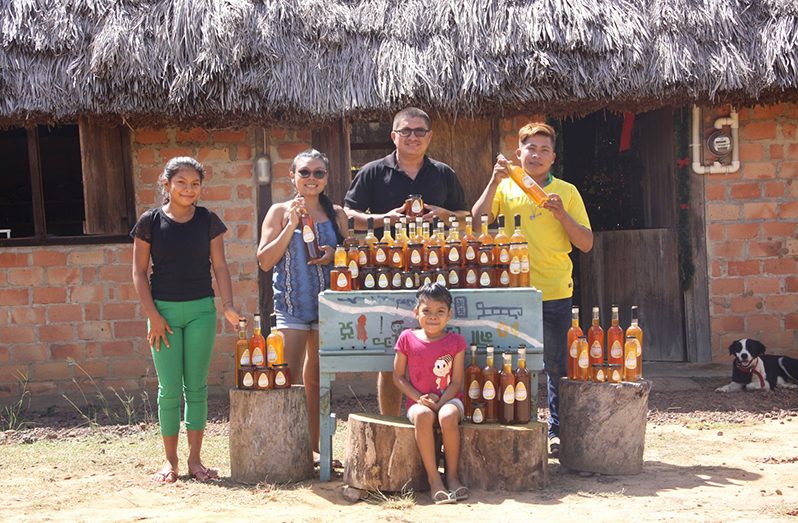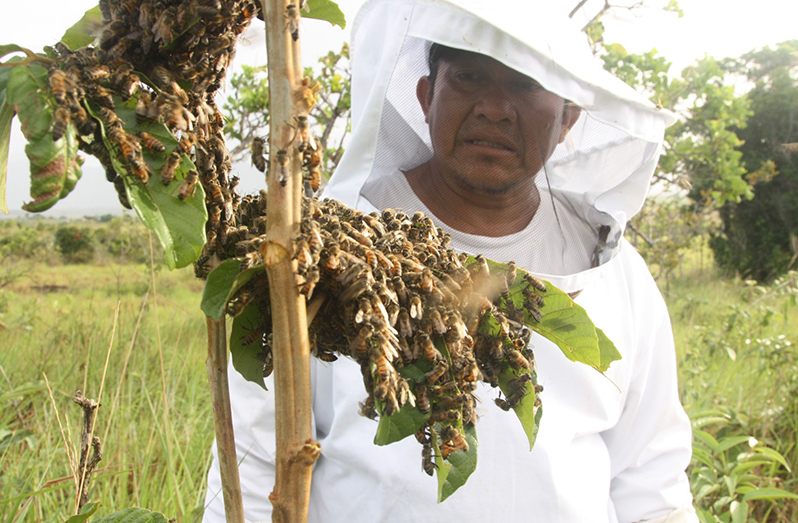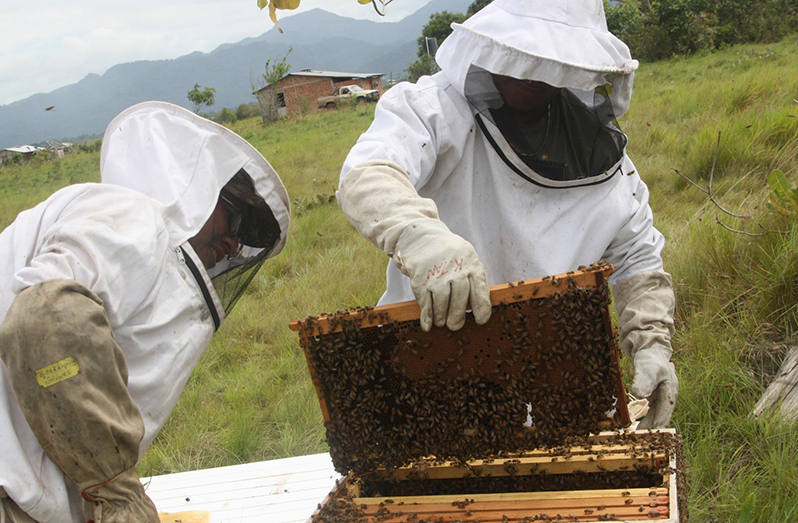18 residents of Nappi, Parishara, and Hiowa learn the dos and don’ts of beekeeping
PASSIONATE about beekeeping from as far back as he can remember, Yimochi Melville wanted to share his knowledge and train others in the field even if it meant doing so voluntarily. ‘If only people can see the benefits of beekeeping and how they can turn it into a side hustle’ is what he’d think.
So he thought about starting training at the St. Ignatius Secondary School and in his village in the years leading up to the COVID-19 pandemic, only to have to stop because suddenly no one could show up for the training.
Imagine his delight when Yimochi, of Mabadap, Culvert City, Lethem, was hired last year by the Hinterland Environmentally Sustainable Agricultural Development (HESAD) project to train 18 persons from three indigenous villages – Nappi, Parishara, and Hiowa – in beekeeping.
Starting last year November, Yimochi, owner of his honey business Mabadap Apiary, commenced the training with the residents, visiting their villages to provide the sort of hands-on training he knew they’d need.
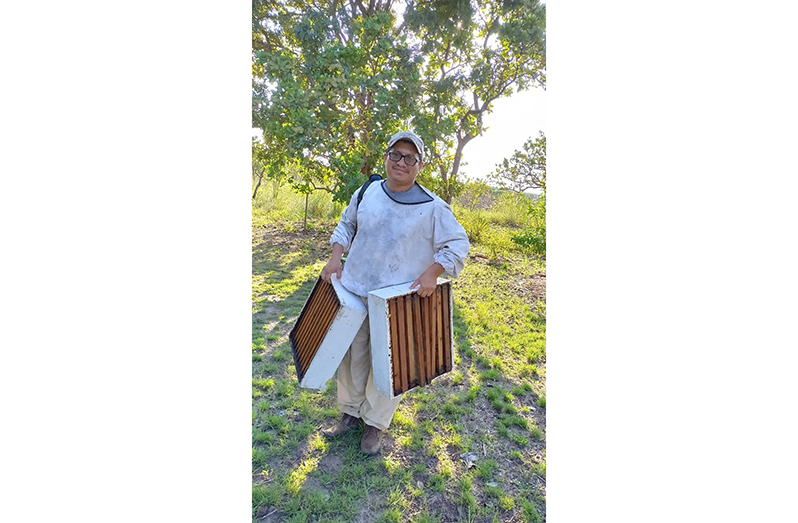
Thanks to the HESAD project, Yimochi was able to provide the 18 persons with some of the equipment needed like the bees’ boxes, protective suits and other gears which the village folks made right there in Lethem.
“So far, it’s been very successful. Being part of the project, you get a startup package with the training and protective gears. We help you to get your first set of bees to get a start and so far, everyone has gotten their bees; some of them have already gotten their first reaping of honey,” Yimochi shared in an interview with Pepperpot Magazine.
The project has been benefitting persons of various backgrounds like school leavers, housewives, farmers and even some of the older village residents. “Some of them have gotten bottles and sold the honey right in their villages, or some would bring it out to Lethem for sale. The local demand is very high, so it’s very easy to find market.”
Yimochi would himself help the persons he trained to sell the product in Lethem and this would be the easiest task ever for him as he’s managed to develop a great reputation over the years for having quality honey.
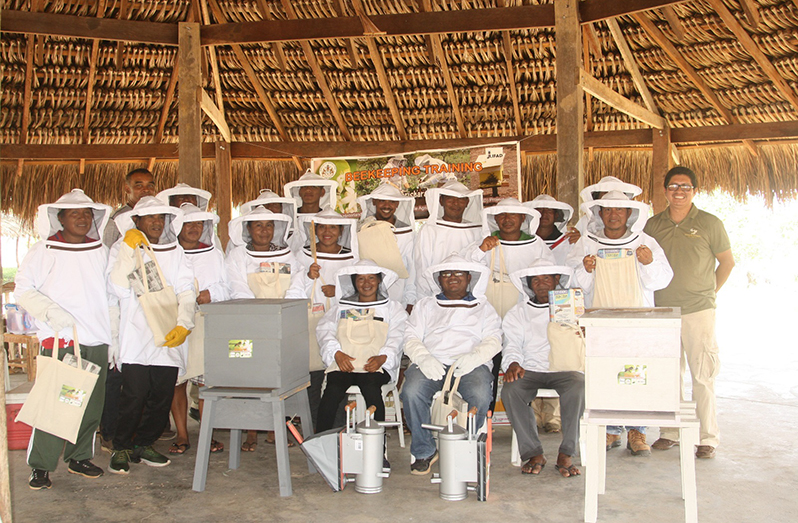
He’d not opt to sell just anyone’s honey. He’d look for those who emphasise, like him, providing the best quality on the market. “People who get the honey the right way and are not being deceptive,” he said about those whom he’d help.
The “right way” means that they’d reap it at the most appropriate time, when it’s really ready. “Certain people who have not done any training do not know when to reap the honey and they will reap it when it’s too green, and then when they get it, it ferments or bubbles up. Others don’t use the right equipment, maybe something unsanitary,” Yimochi explained.
He reflected on President Irfaan Ali’s pledge to assist some of the communities with their honey production. “He wanted to develop a brand of honey from here. I think that’s a great initiative, and I see a lot of potential for it,” he expressed.
Reflecting on some of his early days in beekeeping, Yimochi recalled buying his first beehive box in 2012 and capturing his first hive in the same year. “Since then, I have managed to increase the bees. Sometimes, I have four hives at a time. I had no one to reach out to, to help me understand. But I had them there and I went along by trial and error.
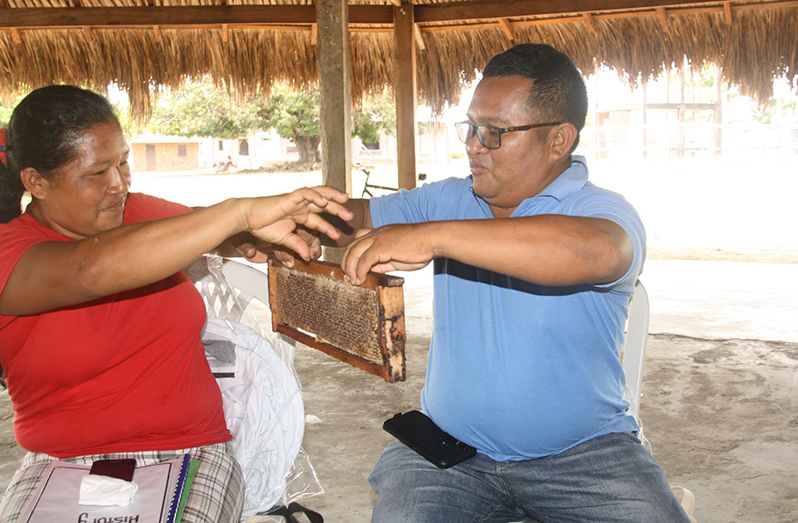
In a previous interview, Yimochi had advised that to be an effective beekeeper, the fear of bees must first be dealt with. “So far, I have captured hives from the wild; trees in the savannah, under a bridge, in someone’s home. I take my hive boxes to the location and place the bees inside. Sometimes you are not successful, but as I go along, I learn how to capture more successfully. You need your smoker, veil, gloves, hive tools, and proper boxes.”
Explaining the process, Yimochi said: “You try to make the bees comfortable in the box so they would make it their home. If they have combs, when you capture them, you put the combs in the box the way they would be in nature so they would feel it’s their home and stay. If they are not comfortable, they will leave. They usually go out to feed, but once they are comfortable, they will always come back. You make sure the queen is laying well and if not, get another queen. The queen is larger in size, has a longer abdomen, and is a bit more reddish coloured.”
“Sometimes we help them out with some syrup made of white sugar mostly, so they can start attaching their combs to the frames that you have in the hives. Once they start doing that, you know they are comfortable. As you see them increasing in size, you need to keep adding boxes because if they run out of space, they will split in half; half will go and half will remain. They will remain in the hive and if you’re lucky, you will get honey,” he continued.




.jpg)



